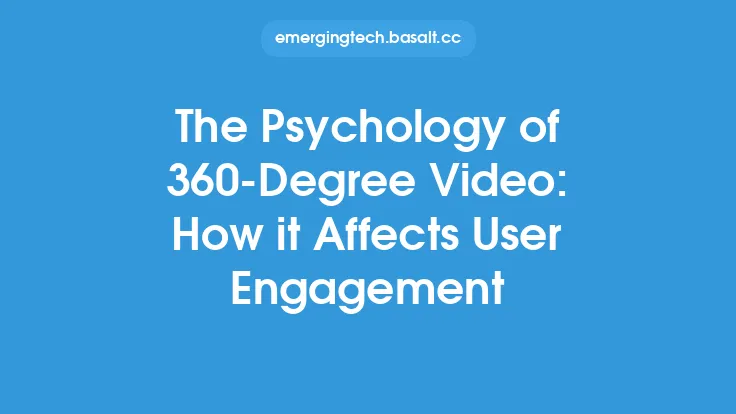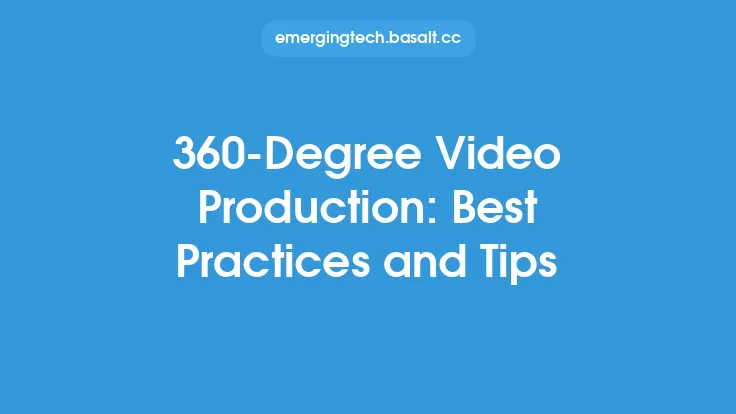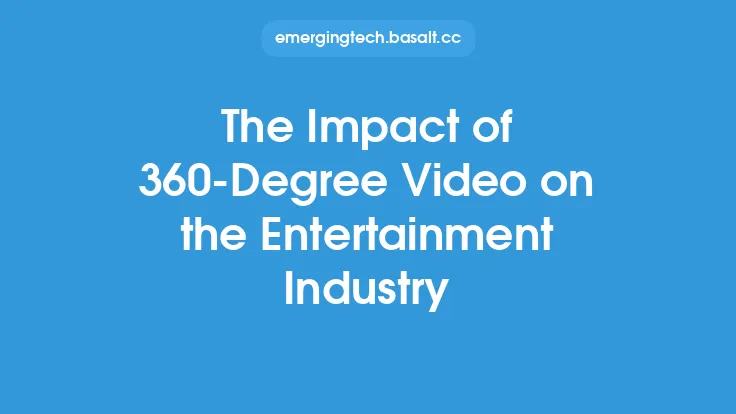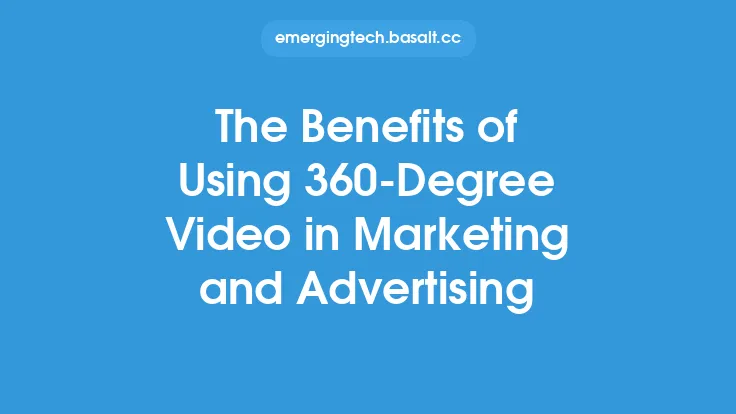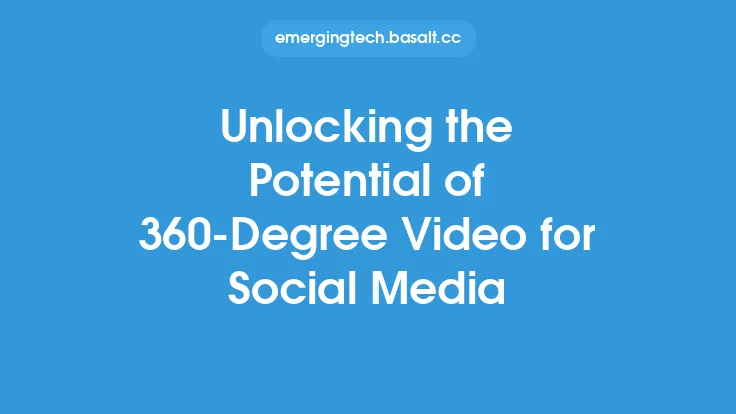The concept of 360-degree video has been around for several years, but it has only recently started to gain mainstream attention. This type of video technology allows viewers to see a complete, 360-degree view of a scene, creating a fully immersive experience. In this article, we will delve into the world of 360-degree video, exploring its history, technical requirements, and the various ways it can be used to tell engaging stories.
History of 360-Degree Video
The idea of 360-degree video has been around since the 1990s, but it wasn't until the 2010s that the technology started to become more accessible. One of the first 360-degree video cameras was the Kogeto Dot, which was released in 2012. This camera used a combination of lenses and sensors to capture a 360-degree view of a scene. Since then, many other companies have developed their own 360-degree video cameras, including GoPro, Ricoh, and Samsung. Today, 360-degree video is used in a wide range of applications, from entertainment and education to marketing and advertising.
Technical Requirements
To create a 360-degree video, you need a camera that is capable of capturing a complete, 360-degree view of a scene. There are several types of cameras that can do this, including monoscopic cameras, stereoscopic cameras, and multi-camera rigs. Monoscopic cameras use a single lens to capture a 360-degree view, while stereoscopic cameras use two lenses to capture a 3D image. Multi-camera rigs use multiple cameras to capture a 360-degree view, and the footage is then stitched together using specialized software. In addition to a 360-degree camera, you also need a computer with specialized software to edit and render the footage. This software includes programs such as Adobe Premiere Pro, Final Cut Pro, and Blackmagic Design DaVinci Resolve.
How 360-Degree Video Works
So, how does 360-degree video actually work? The process starts with the camera, which captures a 360-degree view of a scene using one or more lenses. The footage is then transferred to a computer, where it is edited and rendered using specialized software. The software stitches the footage together, creating a seamless 360-degree view of the scene. The final video is then exported in a format that can be played back on a variety of devices, including computers, smartphones, and virtual reality (VR) headsets. When a viewer watches a 360-degree video, they can use their mouse or touchscreen to navigate the scene, looking around in any direction they choose.
Types of 360-Degree Video
There are several types of 360-degree video, including monoscopic, stereoscopic, and live-action video. Monoscopic video uses a single lens to capture a 360-degree view, while stereoscopic video uses two lenses to capture a 3D image. Live-action video uses real-world footage to create a 360-degree experience, while computer-generated imagery (CGI) video uses animated graphics to create a 360-degree environment. Each type of video has its own unique characteristics and requirements, and the choice of which type to use will depend on the specific needs of the project.
Applications of 360-Degree Video
360-degree video has a wide range of applications, from entertainment and education to marketing and advertising. In the entertainment industry, 360-degree video is used to create immersive experiences, such as virtual reality movies and video games. In education, 360-degree video is used to create interactive learning experiences, such as virtual field trips and training simulations. In marketing and advertising, 360-degree video is used to create engaging and interactive ads, such as product demos and virtual tours. Other applications of 360-degree video include real estate, travel, and healthcare, where it is used to create virtual tours and interactive experiences.
Challenges and Limitations
While 360-degree video has many benefits, it also has several challenges and limitations. One of the biggest challenges is the high cost of equipment and software, which can make it difficult for individuals and small businesses to get started. Another challenge is the complexity of the technology, which can require specialized knowledge and expertise to use effectively. Additionally, 360-degree video can be data-intensive, which can make it difficult to stream and play back on lower-end devices. Finally, 360-degree video can also be prone to errors and glitches, such as stitching errors and camera shake, which can detract from the overall experience.
Best Practices for Creating 360-Degree Video
To create high-quality 360-degree video, there are several best practices to follow. First, it's essential to use high-quality equipment, such as a 360-degree camera and a computer with specialized software. Second, it's crucial to plan and storyboard your project carefully, taking into account the unique characteristics of 360-degree video. Third, it's essential to capture high-quality footage, using techniques such as tripod stabilization and slow motion. Fourth, it's vital to edit and render the footage carefully, using software such as Adobe Premiere Pro or Final Cut Pro. Finally, it's essential to test and optimize the final video, ensuring that it plays back smoothly and looks great on a variety of devices.
Conclusion
In conclusion, 360-degree video is a powerful tool for creating immersive and interactive experiences. With its ability to capture a complete, 360-degree view of a scene, it has a wide range of applications, from entertainment and education to marketing and advertising. While it has several challenges and limitations, the benefits of 360-degree video make it an exciting and worthwhile technology to explore. By following best practices and using high-quality equipment and software, creators can produce high-quality 360-degree video that engages and inspires viewers. As the technology continues to evolve and improve, we can expect to see even more innovative and immersive applications of 360-degree video in the future.

